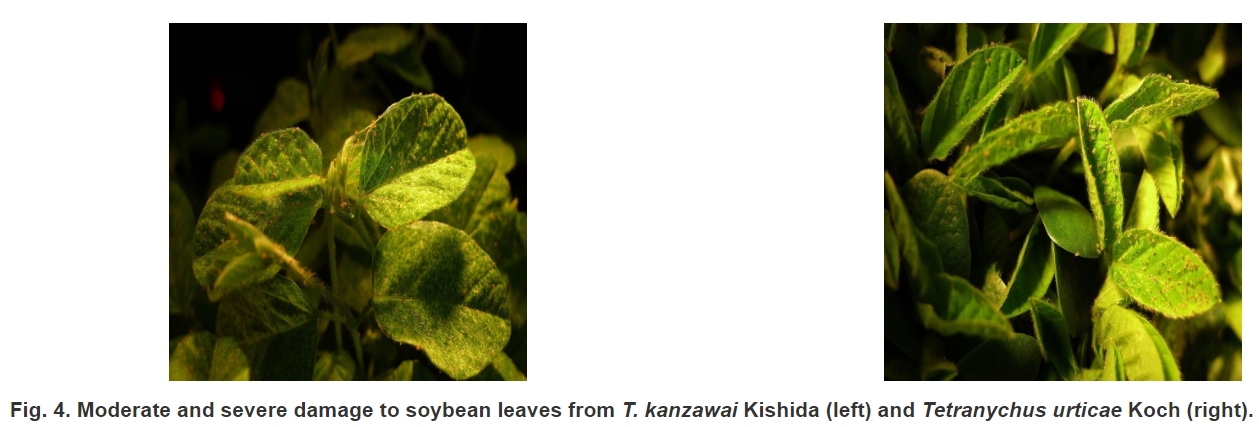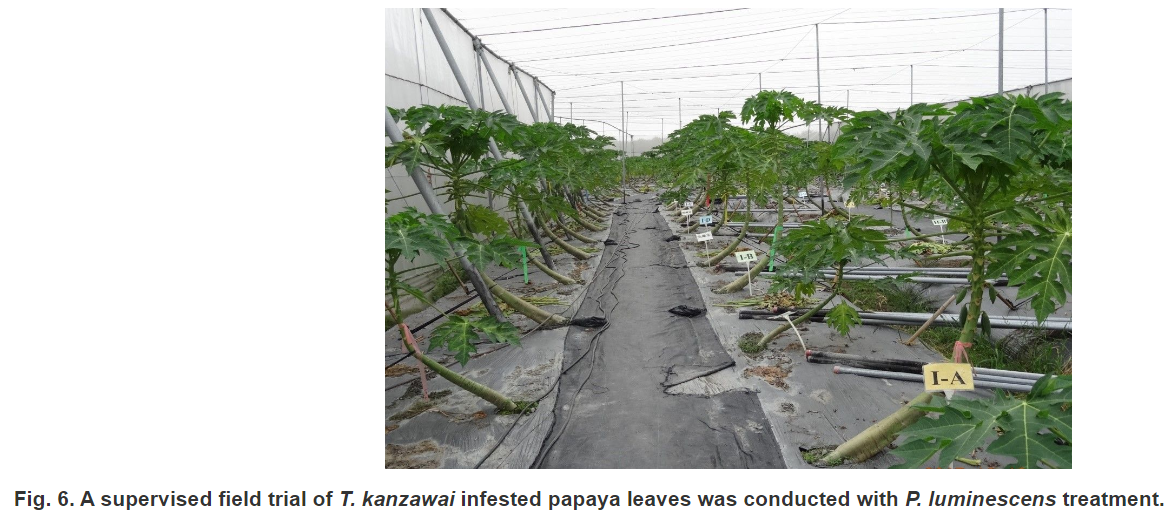Photorhabdus luminescens, formerly Xenorhabdus luminescens, is an insect pathogenic gram-negative rod-shaped bacterium of the family Enterobacteriaceae, with the characteristic of forming a symbiotic relationship with Heterorhabditis spp. P. luminescens was isolated from light-emitting insects that had been infected by entomogenous nematodes of the family Heterorhabditidae. The entomopathogenic nematodes family Heterorhabditidae contains only one genus, Heterorhabditis, which is, at least currently, composed of 10 recognized species. The entomopathogenic Photorhabdus lives in symbiosis with nematodes that invade insects.
When the nematode is ingested by insect larvae, P. luminescens are carried in the gut of the infective larvae of the nematode and released directly into the haemocoel when the nematode invades an insect host. The bacterial cells start to multiply and septicaemia sets in killing the insect within 24–48 h. In addition, the bacterium can be grown as free-living organisms under standard laboratory conditions. Indigenous entomopathogenic nematodes are perhaps more suitable for inundatory release against local insect pests, because they have adapted to local climate and other population regulators. In Taiwan, information on the diversity of Heterorhabditidae and their symbiotic bacteria is currently absent; only Steinernematidae have been documented.
Started from 2004, the Taiwan Agricultural Chemicals and Toxic Substances Research Institute (TACTRI), Dr. Hsieh has been implementing the study on the secondary metabolites from symbiotic bacteria for more than 15 years. H. brevicaudis were successfully recovered from soil samples using the Galleria-bait method. Identification of the nematode was mainly based on observations under scanning electron microscopy (SEM) and nucleotide sequence of the internal transcribed spacer 1 (ITS1). The occurrence of H. brevicaudis and its symbiotic bacteria, P. luminescens subsp. akhurstii in Taiwan were recorded the first time. P. luminescens subsp. akhurstii was isolated from nematodes and identified by phenotypic, biochemical tests, 16S rDNA and Biolog identification system. 13 strains of symbiotic bacteria were successfully isolated from H. brevicaudis, among which the P. luminescens strain 0805-P2R has the most potential development for microbial agents.


The metabolites and toxins from P. luminescens exhibited a wide spectrum of antimicrobial and insecticidal activity against native pests and plant pathogens. The fermentation broth and crude extract of P. luminescens could have antibacterial activities against Bacillus cereus, Escherichia coli, Erwinia carotovora subsp. carotovora and antifungal activities against Botrytis cinerea, Glomerella cingulata, Alternaria mali, Phytophthora capsici. Supernatant fluid of the P. luminescens culture was centrifuged, filtered and protein preparation on 18 species of fungi and 12 species of bacteria were examined by means of dual or concomitant culture methods. High antimicrobial activities against Plutella xylostella and Glomerella mellonella were observed. The LC50 values of protein preparations (greater than 100 kDa) against the 3rd instar larvae of the lepidopteran P. xylostella and G. mellonella were 56 and 200 ppm, respectively.
P. luminescens kills insects through the secretion of high molecular weight toxin complexes. The mortality rates of P. xylostella observed after diluting the P. luminescens strain 0805-P2R fermentation broth 50 times and diluting the supernatant 5 times were 18.89% and 91.11%, respectively. The supernatant of P. luminescens strain 0805-P2R had insecticidal activity, and the main insecticidal toxin complexes had a molecular weight exceeding 70 kDa. Moreover, the insecticidal activity was improved to 92.2% in the 100-fold diluted fermentation broth and to 97.8% in the 10-fold diluted supernatant in the experiments. All combinations tested showed clear indications of lethality, including swelling, vesicle formation, cytoplasm vacuolization, and brush border membrane lysis.
In addition, P. luminescens strain 0805-P2R suspension concentrate, a 500X dilution can effectively reduce the leaf pest incidences of papaya Tetranychus kanzawai. Thus, P. luminescens 0805-P2R as a potent microbial pesticide with bioactivity against insect pests and pathogens of agricultural importance in Taiwan. The large-scale fermentation and application technology for P. luminescens strain 0805-P2R have been transferred to a local company, Sinon Corporation in 2020.




The rising star of Photobacterium: Both insecticidal and antibacterial effects
Photorhabdus luminescens, formerly Xenorhabdus luminescens, is an insect pathogenic gram-negative rod-shaped bacterium of the family Enterobacteriaceae, with the characteristic of forming a symbiotic relationship with Heterorhabditis spp. P. luminescens was isolated from light-emitting insects that had been infected by entomogenous nematodes of the family Heterorhabditidae. The entomopathogenic nematodes family Heterorhabditidae contains only one genus, Heterorhabditis, which is, at least currently, composed of 10 recognized species. The entomopathogenic Photorhabdus lives in symbiosis with nematodes that invade insects.
When the nematode is ingested by insect larvae, P. luminescens are carried in the gut of the infective larvae of the nematode and released directly into the haemocoel when the nematode invades an insect host. The bacterial cells start to multiply and septicaemia sets in killing the insect within 24–48 h. In addition, the bacterium can be grown as free-living organisms under standard laboratory conditions. Indigenous entomopathogenic nematodes are perhaps more suitable for inundatory release against local insect pests, because they have adapted to local climate and other population regulators. In Taiwan, information on the diversity of Heterorhabditidae and their symbiotic bacteria is currently absent; only Steinernematidae have been documented.
Started from 2004, the Taiwan Agricultural Chemicals and Toxic Substances Research Institute (TACTRI), Dr. Hsieh has been implementing the study on the secondary metabolites from symbiotic bacteria for more than 15 years. H. brevicaudis were successfully recovered from soil samples using the Galleria-bait method. Identification of the nematode was mainly based on observations under scanning electron microscopy (SEM) and nucleotide sequence of the internal transcribed spacer 1 (ITS1). The occurrence of H. brevicaudis and its symbiotic bacteria, P. luminescens subsp. akhurstii in Taiwan were recorded the first time. P. luminescens subsp. akhurstii was isolated from nematodes and identified by phenotypic, biochemical tests, 16S rDNA and Biolog identification system. 13 strains of symbiotic bacteria were successfully isolated from H. brevicaudis, among which the P. luminescens strain 0805-P2R has the most potential development for microbial agents.
The metabolites and toxins from P. luminescens exhibited a wide spectrum of antimicrobial and insecticidal activity against native pests and plant pathogens. The fermentation broth and crude extract of P. luminescens could have antibacterial activities against Bacillus cereus, Escherichia coli, Erwinia carotovora subsp. carotovora and antifungal activities against Botrytis cinerea, Glomerella cingulata, Alternaria mali, Phytophthora capsici. Supernatant fluid of the P. luminescens culture was centrifuged, filtered and protein preparation on 18 species of fungi and 12 species of bacteria were examined by means of dual or concomitant culture methods. High antimicrobial activities against Plutella xylostella and Glomerella mellonella were observed. The LC50 values of protein preparations (greater than 100 kDa) against the 3rd instar larvae of the lepidopteran P. xylostella and G. mellonella were 56 and 200 ppm, respectively.
P. luminescens kills insects through the secretion of high molecular weight toxin complexes. The mortality rates of P. xylostella observed after diluting the P. luminescens strain 0805-P2R fermentation broth 50 times and diluting the supernatant 5 times were 18.89% and 91.11%, respectively. The supernatant of P. luminescens strain 0805-P2R had insecticidal activity, and the main insecticidal toxin complexes had a molecular weight exceeding 70 kDa. Moreover, the insecticidal activity was improved to 92.2% in the 100-fold diluted fermentation broth and to 97.8% in the 10-fold diluted supernatant in the experiments. All combinations tested showed clear indications of lethality, including swelling, vesicle formation, cytoplasm vacuolization, and brush border membrane lysis.
In addition, P. luminescens strain 0805-P2R suspension concentrate, a 500X dilution can effectively reduce the leaf pest incidences of papaya Tetranychus kanzawai. Thus, P. luminescens 0805-P2R as a potent microbial pesticide with bioactivity against insect pests and pathogens of agricultural importance in Taiwan. The large-scale fermentation and application technology for P. luminescens strain 0805-P2R have been transferred to a local company, Sinon Corporation in 2020.